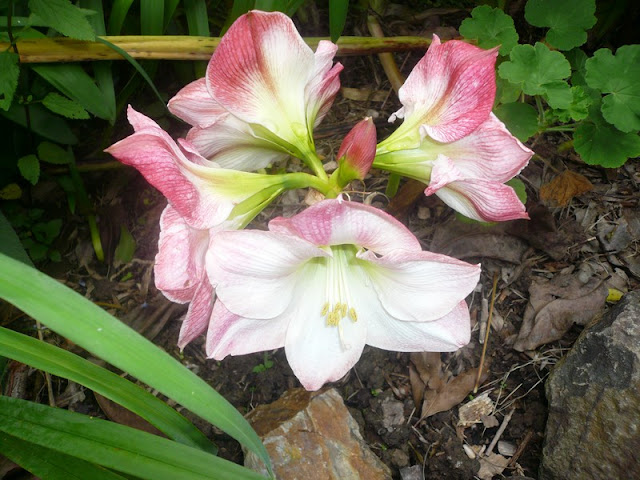All the Hippeastrums are grown from seed from a couple of bulbs I received 20 years ago. I have bought a pink, white and appleblossom, last year, which have flowered once. Hopefully I will get some more variations.
The above are a small selection of all subtle and also more flamboyant variations.
Hippeastrum is a genus of about 90 species and 600+ hybrids and cultivars of bulbous plants in the family Amaryllidaceae. Native to tropical and subtropical regions of the Americas from Argentina north to Mexico and the Caribbean. Some species are grown for their large showy flowers. These plants are popularly but erroneously known as Amaryllis, a monotypic African genus in the same family.
"Hippeastrum" is Greek for "horseman's star". It was chosen in 1837 by the Honorable Reverend William Herbert, Dean of Manchester. No one is entirely sure why he picked this name, it's likely he chose it because of the plant's striking resemblance to the "morning star", a medieval weapon used by horsemen, as William Herbert was both a clergyman and something of an expert on early medieval history. A version of the weapon was also called a "holy water sprinkler," an ecclesiastical object with which the Dean would have been familiar.
The first commercial breeders of Hippeastrum were Dutch growers who imported several species from Mexico and South America and began developing cultivars and hybrids from them in the 18th century; the first of these reached North America early in the 19th century. In 1946 two Dutch growers moved to the Union of South Africa and began cultivation there. Although most cultivars of Hippeastrum come from the Dutch and South African sources, bulbs are now being developed in the United States, Japan, Israel, India, Brazil and Australia.
Some excerpts from Wikipedia.
Believe it or not
"How the world turns. One day, cock of the walk. Next, a feather duster."
Aunty Entity - Mad Max Beyond Thunderdome (1985)











